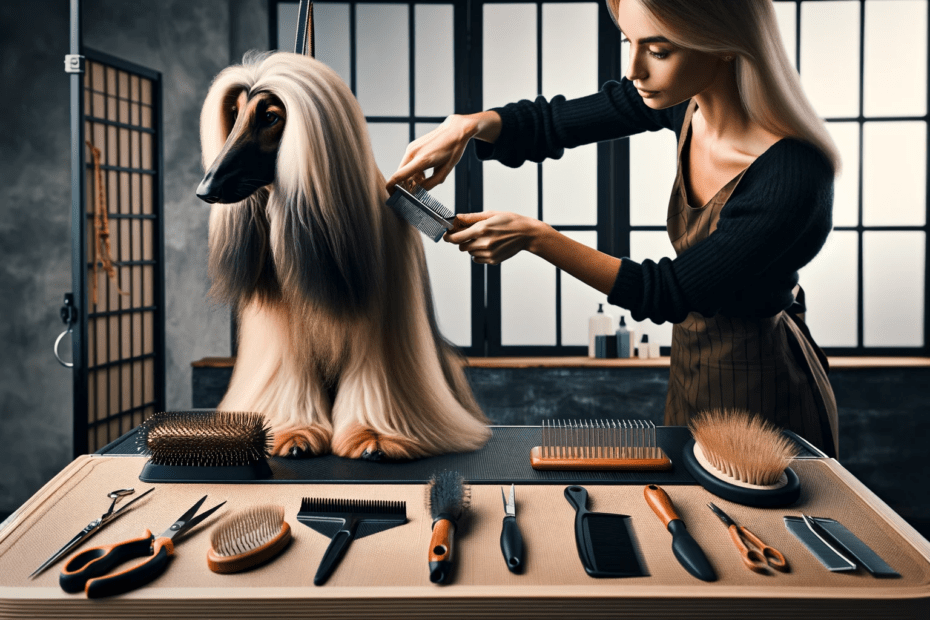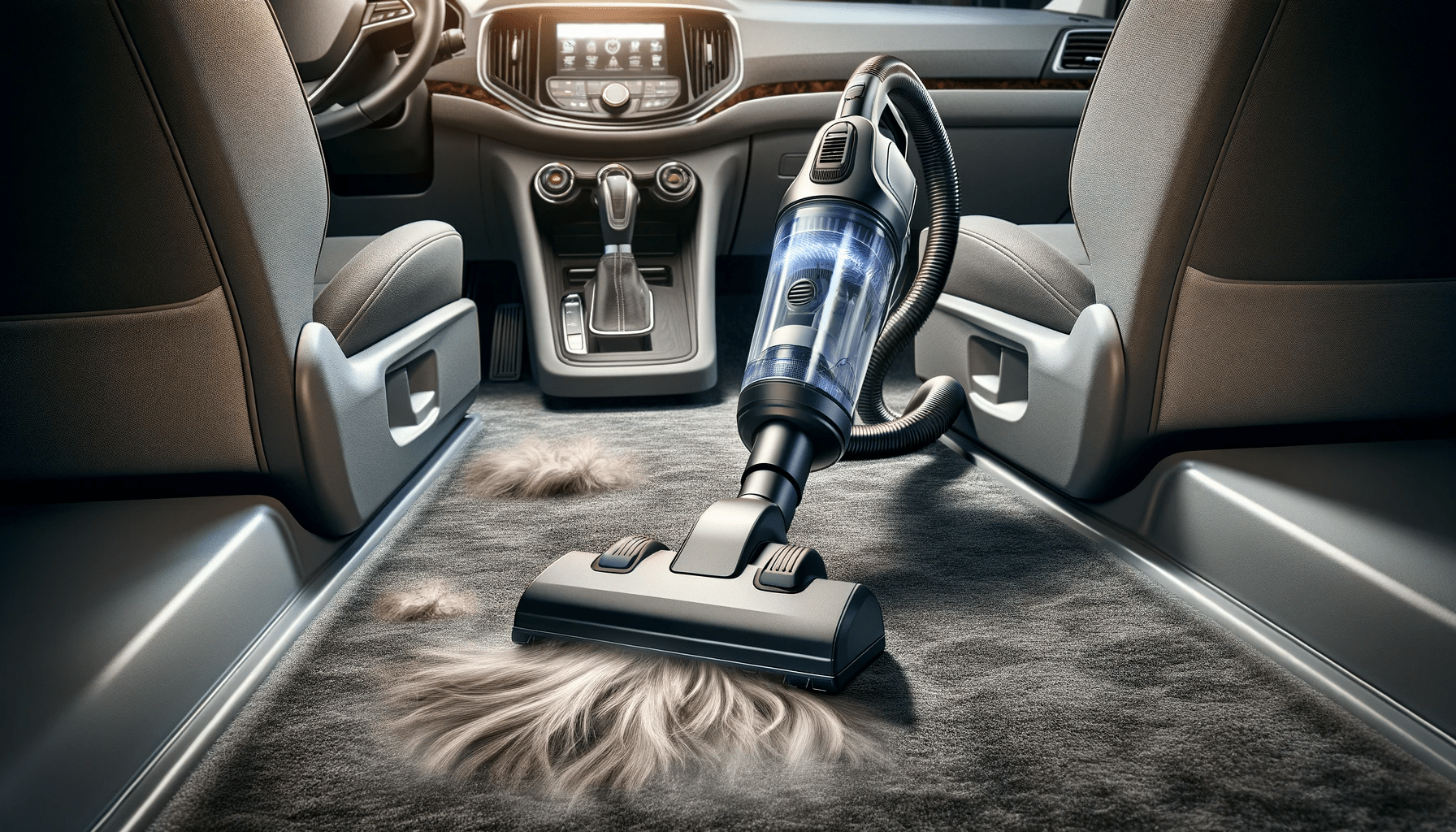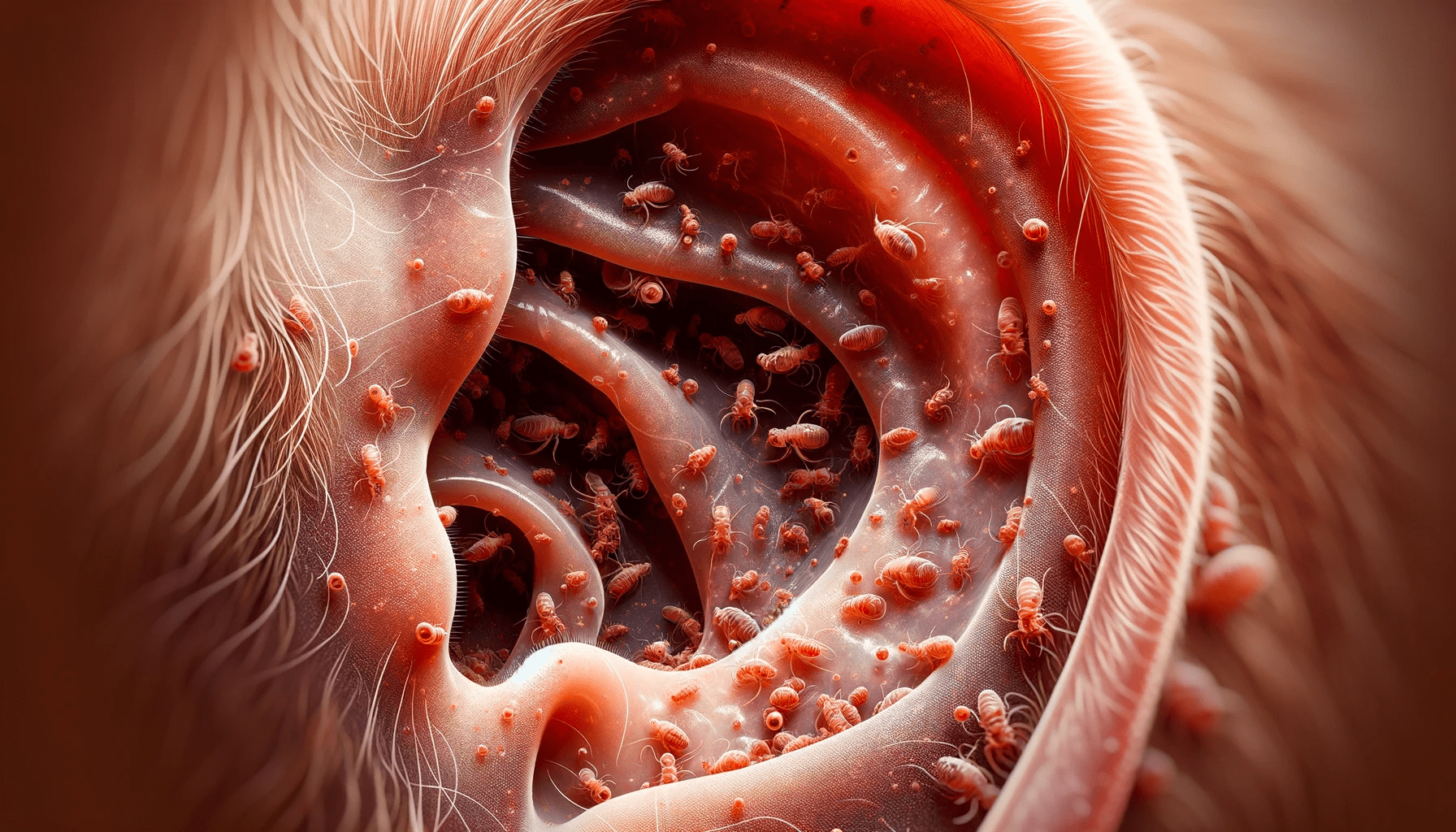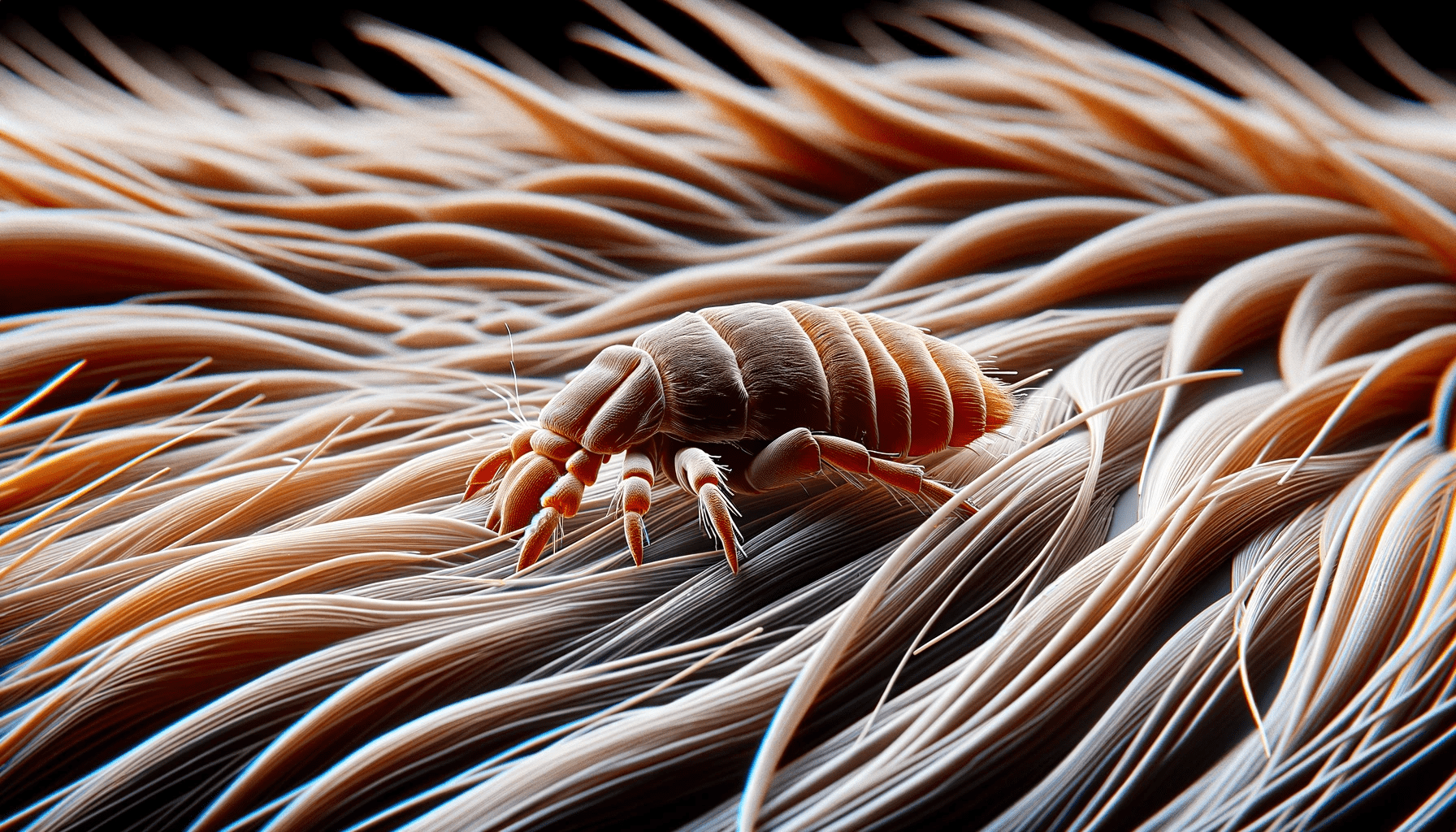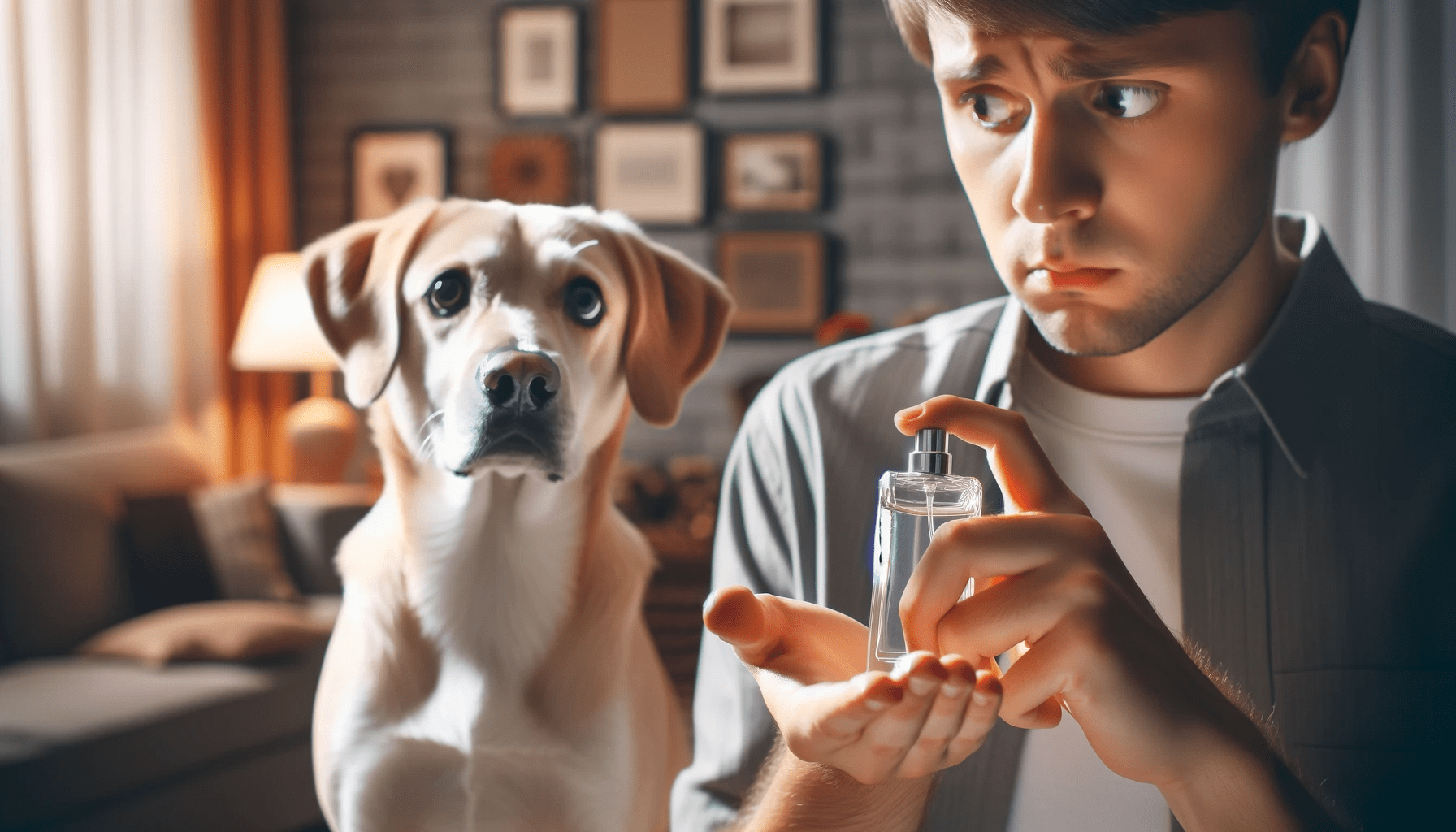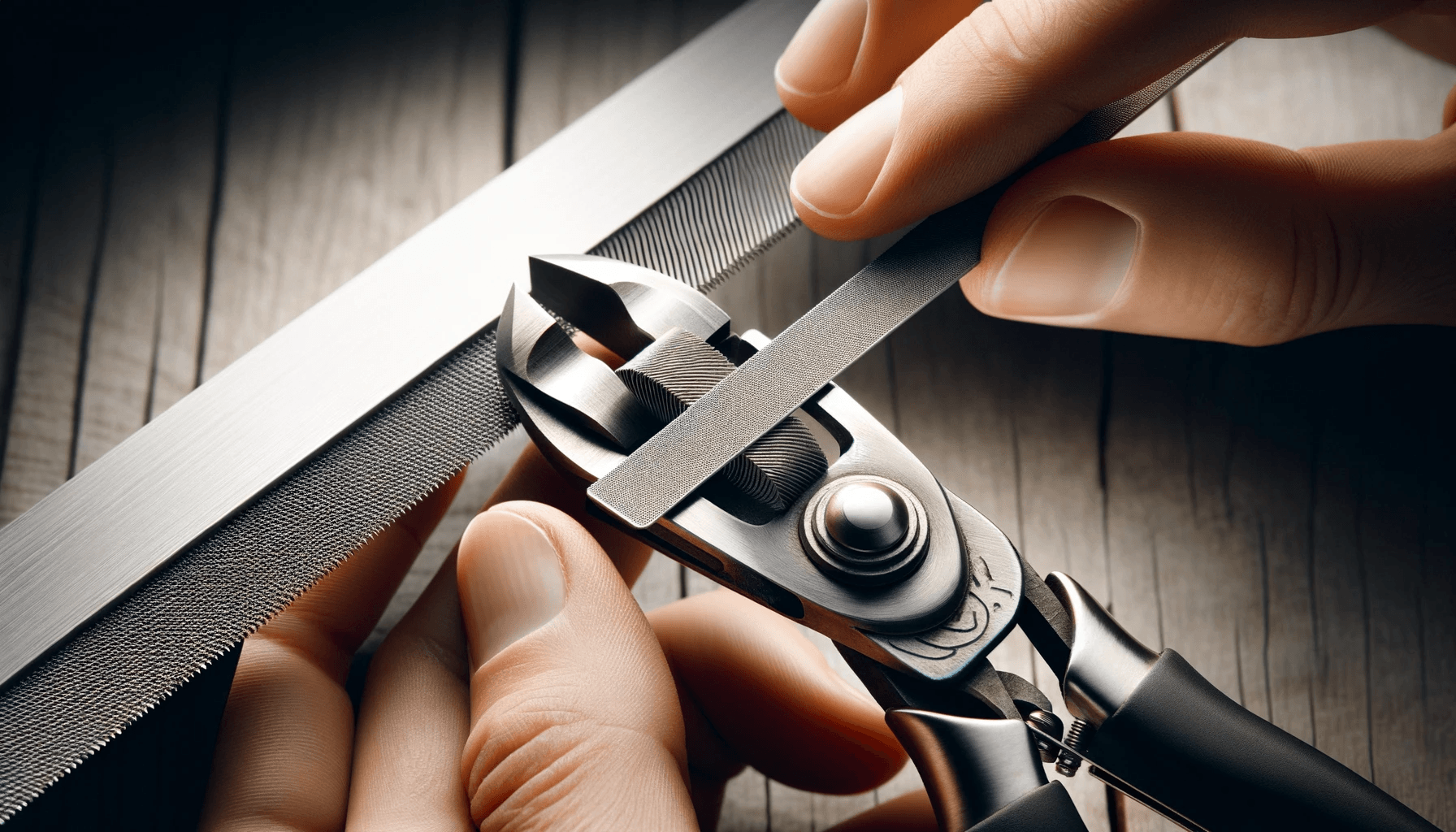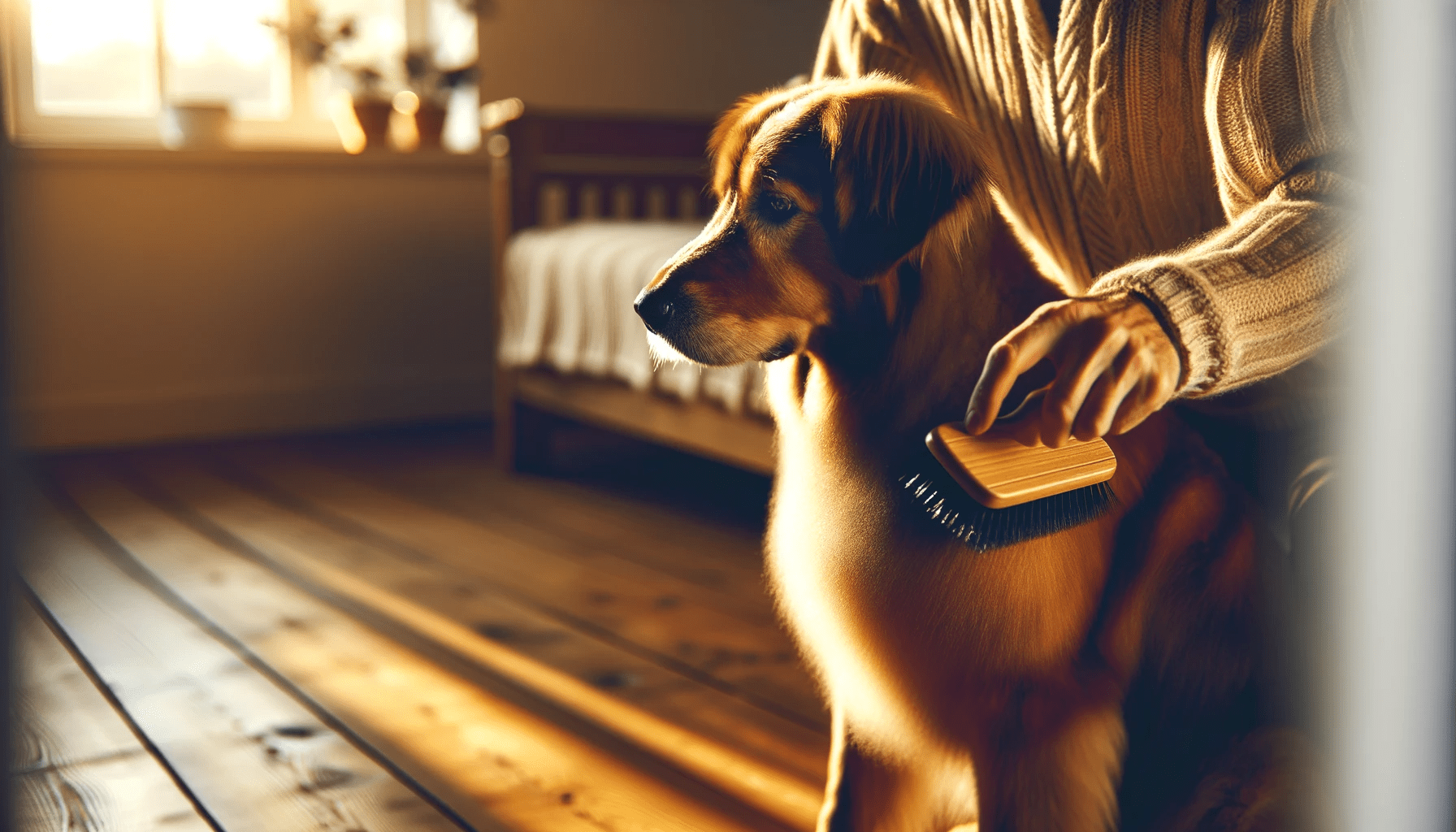Looking to keep your long-haired dog looking their best? Discover the best grooming hacks for long-haired dogs!
Learn proper brushing techniques, how to deal with tangles and mats, and get bathing tips.
Find out how to trim and shape their hair, manage shedding and fur control, and maintain healthy coats.
With these handy tips, you'll have your furry friend looking fabulous in no time!
Key Takeaways
- Use a high-quality brush designed for your dog's coat type
- Regular brushing helps prevent mat formation and tangles
- Invest in high-quality grooming tools such as slicker brushes and wide-tooth combs
- Incorporate grooming products with hair growth-promoting ingredients to minimize shedding and strengthen the coat.
Proper Brushing Techniques
To effectively groom your long-haired dog, begin by using a high-quality brush specifically designed for their coat type. Proper brushing techniques are essential for preventing shedding and keeping your dog's fur healthy and tangle-free.
When brushing, start at the top of the head and work your way down the body, gently untangling any knots or mats you come across. Use long, sweeping strokes, and be sure to brush in the direction of hair growth. This will help to remove loose fur and distribute natural oils throughout the coat.
Pay extra attention to areas prone to matting, such as behind the ears, under the armpits, and around the tail. If you encounter any stubborn tangles, use a detangling spray or conditioner to make the process easier. Remember to be gentle and patient with your furry friend, as pulling or tugging on their fur can cause discomfort.
Regular brushing sessions, at least once or twice a week, will help to keep your long-haired dog's coat looking beautiful and reduce shedding. Don't forget to reward your dog with treats and praise for their cooperation during the grooming process!
Dealing With Tangles and Mats
When dealing with tangles and mats in your long-haired dog's coat, it's important to use the proper brushing techniques. Regular brushing helps prevent mat formation by removing loose hair and preventing it from tangling.
Additionally, using detangling products recommended by professional groomers can help make the detangling process easier and less painful for your furry friend.
Brushing Techniques
Maintaining the luscious coat of your long-haired dog requires effective brushing techniques to tackle tangles and mats. To keep your dog's fur in top condition, consider the following tips:
Different brush types:
- Slicker brush: Ideal for removing tangles and mats in dense coats.
- Bristle brush: Great for daily grooming and distributing natural oils.
Grooming frequency:
- Daily brushing: Essential for preventing tangles and mats from forming.
- Regular professional grooming: Helps keep the coat healthy and reduces the risk of matting.
Using the right brush for your dog's coat type is crucial in maintaining a tangle-free mane. Additionally, brushing your long-haired dog daily is key to preventing mats from becoming a bigger problem. Regular visits to a professional groomer can also provide deep cleaning and necessary trimming to keep your dog's coat looking its best.
Preventing Mat Formation
To prevent mat formation and effectively deal with tangles and mats in your long-haired dog's coat, it's important to implement proper grooming techniques and tools. Preventing matting is crucial to maintain a healthy and attractive coat for your furry friend.
Regular brushing is key to remove loose hair and prevent it from tangling and forming mats. Choose the right brush for your dog's coat type, such as a slicker brush or a comb with wide-spaced teeth. Start at the ends of the hair and work your way up to the roots, being gentle to avoid hair breakage.
If you encounter a mat, use a detangling spray or conditioner to make it easier to comb out. Remember to brush your dog's coat daily, especially in areas prone to matting, like behind the ears and under the legs.
Detangling Products Recommended
Are you wondering which detangling products are recommended for dealing with tangles and mats in your long-haired dog's coat? Don't worry, we've got you covered! When it comes to keeping your furry friend's coat looking its best, using the right detangling sprays and grooming tools can make all the difference.
Here are a few top recommendations to help you tackle those pesky tangles:
- Detangling sprays: Look for sprays specifically formulated to aid in detangling. These sprays often contain ingredients like silicone or keratin, which help to smooth and soften the hair, making it easier to untangle.
- Grooming tools: Invest in high-quality grooming tools, such as slicker brushes and wide-tooth combs. Slicker brushes are great for removing loose hair and gently untangling mats, while wide-tooth combs are perfect for working through larger tangles without causing discomfort to your dog.
Bathing Tips for Long-Haired Dogs
To keep your long-haired dog looking their best, regularly bathe them using gentle dog shampoo and warm water. The frequency of bathing will depend on your dog's specific needs and lifestyle. If your dog spends a lot of time outdoors or gets dirty frequently, you may need to bathe them more often. However, over-bathing can strip their coat of natural oils, so it's important to find a balance. Generally, bathing once every three to four weeks should be sufficient for most long-haired dogs.
When it comes to drying your long-haired dog after a bath, it's important to be mindful of their coat's delicate nature. Avoid vigorously towel-drying, as this can create tangles and mats. Instead, gently squeeze out excess water using a towel or microfiber cloth. You can also use a blow dryer on a low heat setting, keeping it at a safe distance from your dog's skin to prevent any discomfort.
If your dog has a particularly thick or dense coat, consider using a slicker brush or comb to remove any remaining moisture and prevent tangles. Regular brushing between baths can also help distribute natural oils and keep their coat healthy and shiny.
Trimming and Shaping the Hair
Start by trimming and shaping your long-haired dog's hair regularly to maintain their desired look. Proper hair care is essential to keep your dog's coat healthy and free from tangles and mats.
Here are some grooming tools and techniques you can use:
- Grooming shears: Invest in a good pair of grooming shears specifically designed for dogs. These shears are sharp and precise, allowing you to trim the hair evenly and easily.
- Thinning shears: Thinning shears are great for blending and removing bulk from the coat. They help create a natural and well-groomed appearance.
- Clippers: Clippers can be used to trim the hair in sensitive areas like the face, paws, and sanitary areas. Ensure you use clippers with the appropriate attachments for different hair lengths.
- Comb and brush: Regularly comb and brush your dog's hair to prevent tangles and mats. Use a wide-toothed comb for detangling and a slicker brush for removing loose hair.
Remember to be patient and gentle while trimming and shaping your dog's hair. Take breaks if needed and reward your furry friend with treats for good behavior.
Managing Shedding and Fur Control
Continue managing shedding and fur control by regularly brushing your long-haired dog's coat. This is the most effective way to prevent tangles and keep shedding under control. Brushing your dog's coat not only removes loose fur, but it also helps distribute the natural oils, promoting a healthy and shiny coat. Make sure to use a brush that's suitable for your dog's fur type, such as a slicker brush or a de-shedding tool.
To effectively manage shedding, it's recommended to brush your long-haired dog at least once a week. However, during shedding seasons, such as spring and fall, you may need to brush more frequently. Be gentle when brushing to avoid causing discomfort or pain to your dog. Start by brushing in the direction of hair growth and gradually work through any tangles or mats.
In addition to regular brushing, consider using products that help control shedding. There are various shampoos and conditioners available that can help reduce shedding and keep your dog's coat healthy. These products often contain ingredients that promote hair growth and strengthen the hair shaft, minimizing shedding.
Tips for Maintaining Healthy Coats
To ensure your long-haired dog has a healthy coat, it's important to incorporate proper grooming techniques and regular maintenance. Here are some tips to help you maintain your dog's coat and keep it looking its best:
- Tips for reducing shedding:
- Brush your dog regularly: Brushing your dog's coat helps to remove loose fur and prevent it from matting. This can significantly reduce shedding.
- Use a shedding tool: Investing in a good shedding tool can be a game-changer. These tools are designed to remove loose fur from your dog's coat, reducing shedding and preventing matting.
- Choosing the right grooming tools:
- Select a brush that's suitable for your dog's coat type: Different breeds have different coat types, so it's important to choose a brush that's specifically designed for your dog's coat. This will ensure that you're effectively removing loose fur and preventing matting.
- Consider using a detangling spray: If your dog's coat tends to get tangled easily, a detangling spray can be very helpful. It will make brushing easier and prevent discomfort for your dog.
Frequently Asked Questions
How Often Should I Bathe My Long-Haired Dog?
You should bathe your long-haired dog regularly to prevent matting and keep them cool in hot weather. Follow these grooming hacks to maintain their coat and ensure their comfort.
What Is the Best Type of Brush to Use for Long-Haired Dogs?
To keep your long-haired dog looking their best, use the best grooming tools like a slicker brush or a deshedding tool. Regular brushing and tips for preventing matting will help maintain their beautiful coat.
Can I Use Human Shampoo on My Long-Haired Dog?
Using human shampoo on your long-haired dog can have both pros and cons. While it may be convenient, human shampoos are not formulated for dogs and can disrupt the pH balance of their skin, leading to dryness and irritation.
How Often Should I Trim My Dog's Hair?
You should trim your dog's hair every 6-8 weeks to prevent matting in long-haired dogs. Avoid common grooming mistakes like using human shampoo, which can dry out their skin.
Are There Any Specific Dietary Recommendations for Maintaining a Healthy Coat in Long-Haired Dogs?
To maintain a healthy coat in long-haired dogs, dietary recommendations include a balanced diet with essential nutrients. Supplements like omega-3 fatty acids can also promote coat health. Regular grooming routines, including brushing and bathing, are essential for long-haired breeds.
Conclusion
In conclusion, taking care of a long-haired dog requires proper grooming techniques. Regular brushing, dealing with tangles and mats, bathing, trimming, and managing shedding are all essential for maintaining a healthy coat.
By following these grooming hacks, you can keep your long-haired dog looking and feeling their best. Remember to consult a professional groomer or veterinarian for specific advice and tips tailored to your dog's needs.
Happy grooming!
